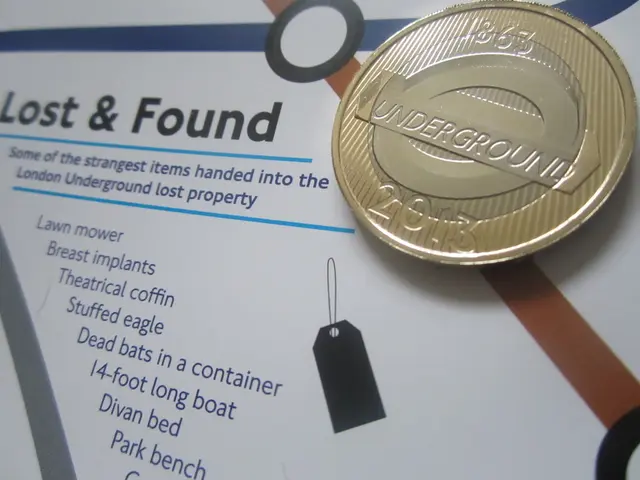Ripple Takes Center Stage in Global Finance over SWIFT, According to Teucrium CEO's Viewpoint
In the world of cryptocurrencies, Ripple and its native token, XRP, are making waves. Sal Gilbertie, the CEO of Teucrium, recently suggested that Ripple could hold XRP as a strategic asset and even become a major player in the banking sector, potentially ranking among the top 20 capitalized banks globally.
As of late August 2025, Ripple's application for a U.S. national trust bank charter is under review by the Office of the Comptroller of the Currency (OCC). However, the application faces significant regulatory scrutiny and opposition from the Independent Community Bankers of America (ICBA).
The proposed charter, if approved, would allow Ripple to establish a federally regulated trust bank called Ripple National Trust Bank (RNTB). The primary focus of RNTB would be to support Ripple's stablecoin operations and gain access to the Federal Reserve's payment systems through a master account. This would significantly boost Ripple's regulatory standing and credibility within the U.S. financial system, potentially allowing XRP to become a core settlement currency and enhancing global payment efficiency.
However, opposition to the charter cites risks of regulatory evasion, consumer protection, anti-money laundering compliance, and broader financial stability risks. The ICBA argues that the charter could enable Ripple to sidestep traditional banking regulations through deposit-like stablecoin activities.
If approved, Ripple's charter and Federal Reserve access could provide a faster, cheaper cross-border settlement alternative to the SWIFT network, leveraging blockchain and tokenized assets. Ripple's blockchain-based solutions aim to streamline global funds transfer, potentially increasing speed and lowering costs compared to the traditional SWIFT network reliant on correspondent banks.
As of August 18, XRP is trading at an 11-day low, just under $3.00, and is 18% below its July all-time high of $3.65. Analyst Ali Martinez warns that the token's near-term trajectory depends on reclaiming critical resistance levels, with failure to move above $3.30 potentially exposing XRP to a decline toward $2.60.
Despite the drop, XRP remains up by more than 425% year-on-year. Over the past week, XRP has dropped 9.1%.
Gilbertie also highlighted that blockchain solves a critical economic inefficiency in international transfers by eliminating the need to pre-fund accounts in both sending and receiving countries. He further noted that nobody seems to be discussing the potential unlocking of frozen money on banks' balance sheets due to the shift to blockchain technology.
October 2025 is a pivotal month, with both the banking charter decision and SEC rulings on XRP ETFs likely to significantly influence Ripple’s integration into mainstream finance and its competitive position versus traditional systems like SWIFT. Maintaining support at $2.81 is necessary to preserve XRP's bullish structure, according to Martinez. The asset manager, who launched the first-ever leveraged XRP exchange-traded fund (ETF) in the U.S. in April, predicts that the SEC could approve spot XRP ETFs before the end of the year.
In summary, Ripple's charter application and the future role of XRP are closely watched developments in the world of cryptocurrencies. With key regulatory decisions expected by October 2025, the coming months promise to be exciting for Ripple and its supporters.
Read also:
- Tesla is reportedly staying away from the solid-state battery trend, as suggested by indications from CATL and Panasonic.
- Review of the 2025 Lamborghini Revuelto: Blazing Beasts on Wheels
- Tech giant Apple debuts sports app integrating betting odds provided by DraftKings
- Examining Digital Payment Cards in Nigeria (2025)






